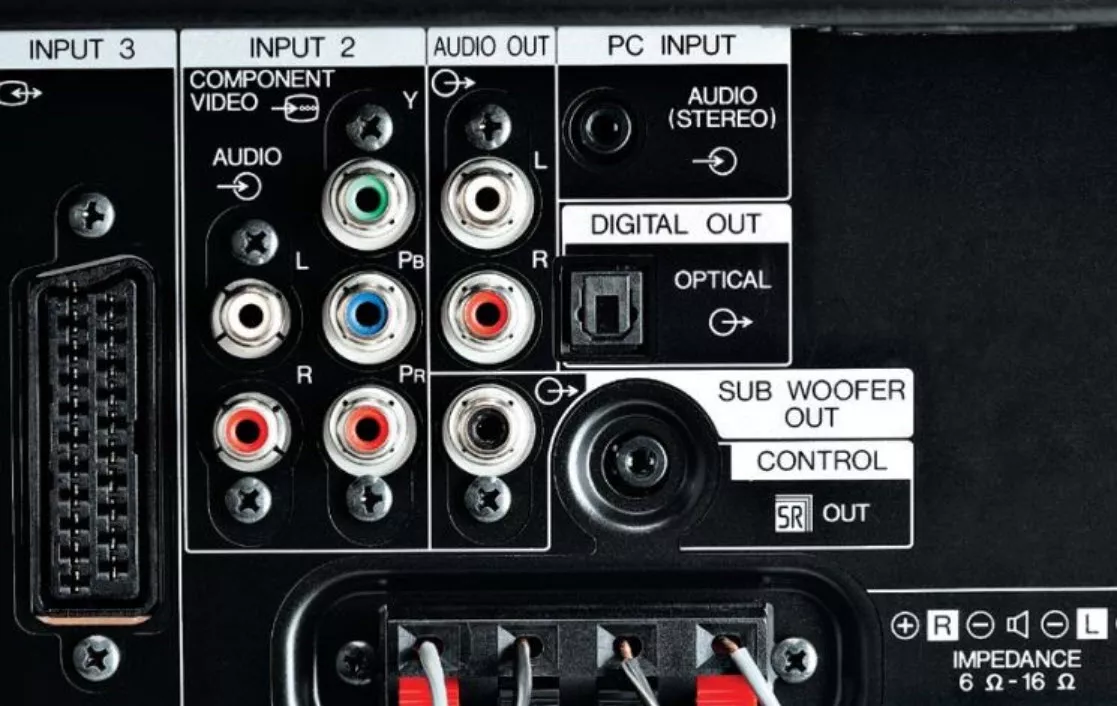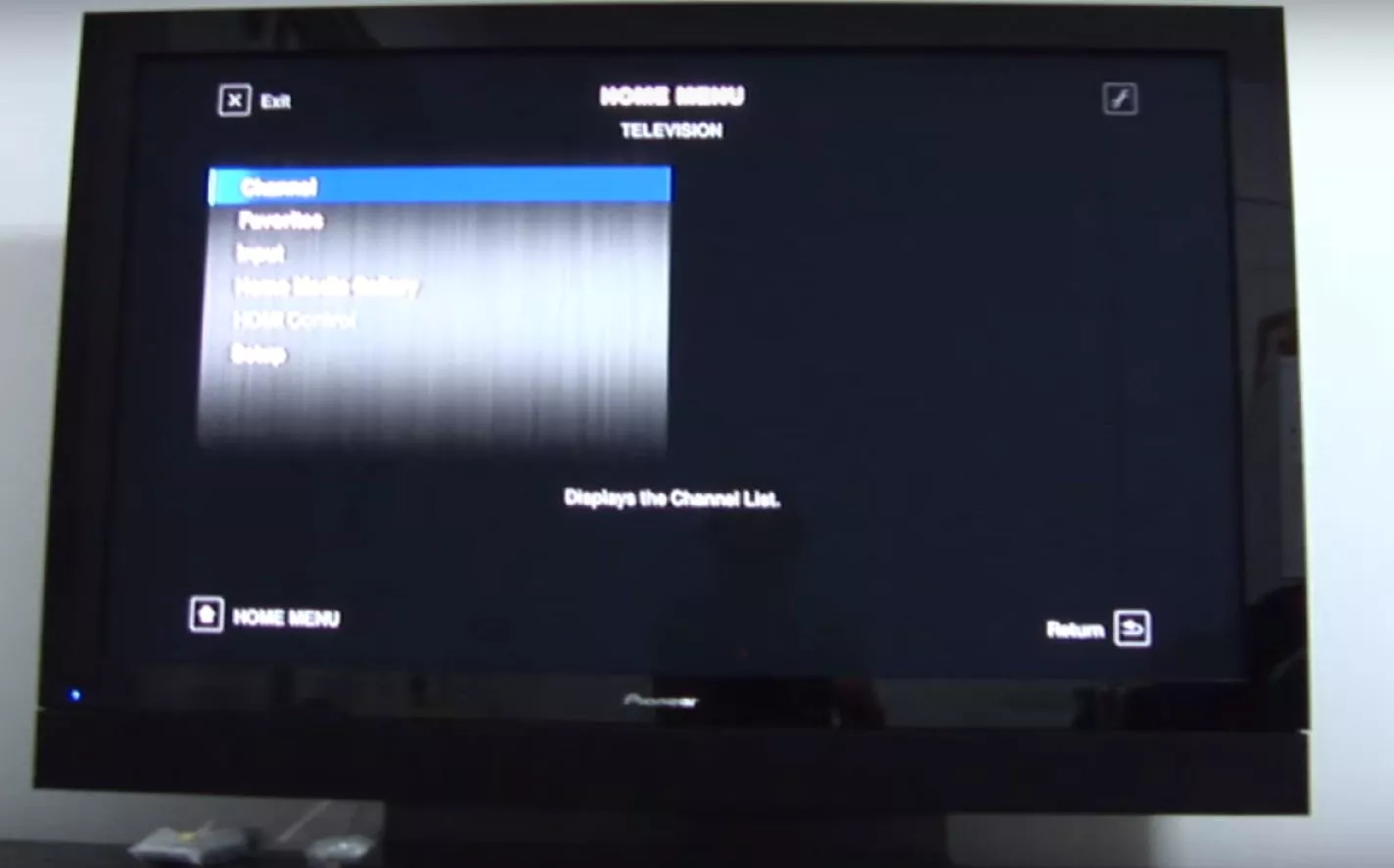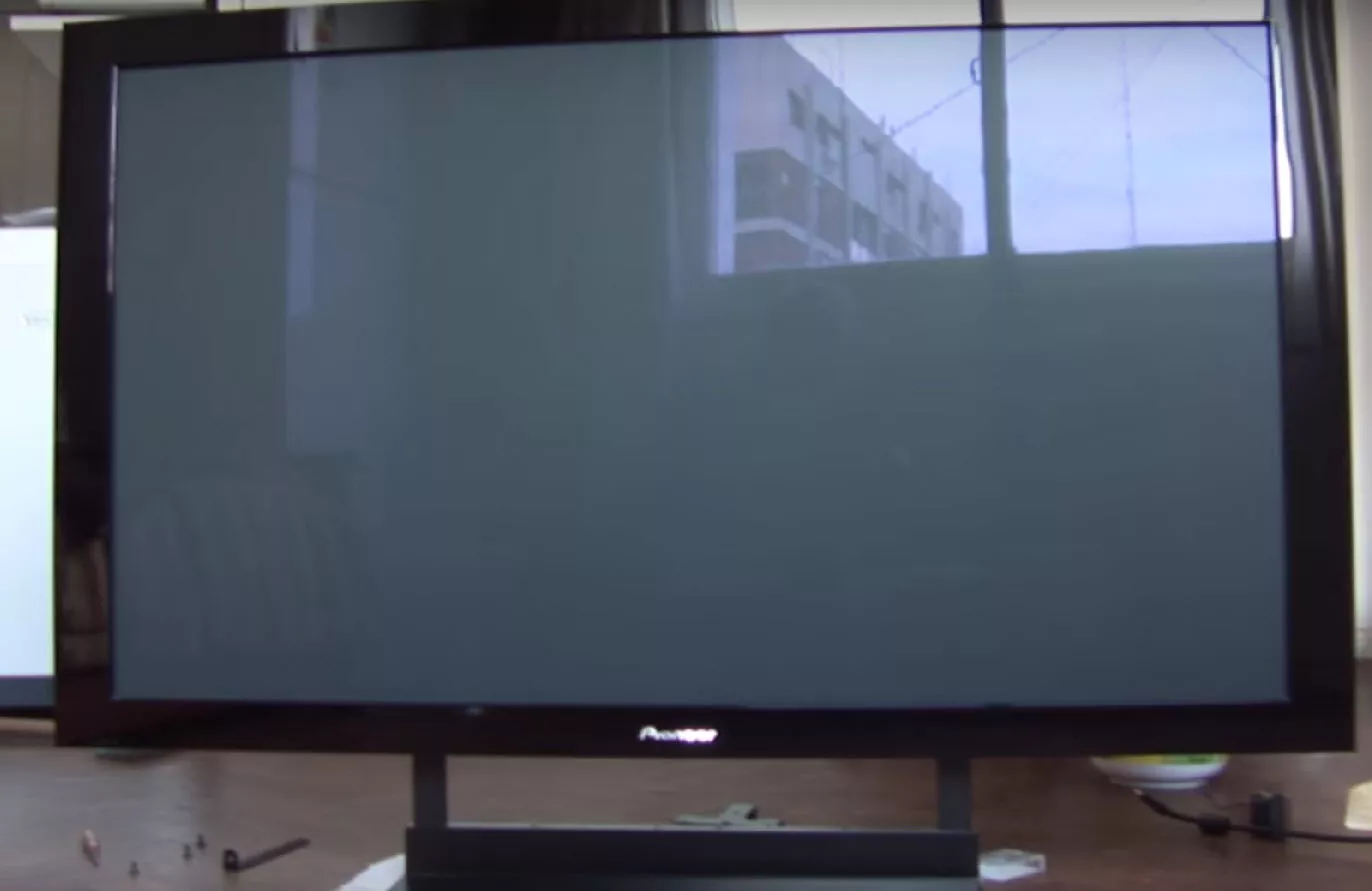Having A Pioneer Kuro Today
In 2008 I bought The Pioneer Kuro (PDP-5090) (1). One of the best TVs of all time (2) with a resolution of 1080p. It was my TV until 2017. Now I have their new TV, analyzed in my Pioneer TV 4K review. I do not have another technological device that lived so much.
At that time, LCD was improving (3) with every single iteration (4) and plasmas (5) were impressing us (6) along with beautiful flat panels (7) and designs (8). Pioneer had their own patents, pure internal development (9).
There were never levels of black (10) like we saw in late 2007 (myself in 2008). When a Pioneer Kuro depicted black, it was a pure black color. Pure black means not only the black color itself. The pure black concept encompasses advantages to the overall quality of the images and contrast.
By 2009, LCD TVs were getting cheaper. Pioneer Kuro televisions were very expensive and only suitable for expert customers. Not all LCD TV customers were like us and the majority of them were just looking for cheap LCDs, 720p models. They were not video or HiFi aficionados.
Pioneer sold their patents to Panasonic in a group of operations that concluded in 2010. Pioneer felt that they were too good for a market that was only moved by cheap prices.
So I am still having my Pioneer Kuro as a second TV even if it has a 1080p resolution and is not one of those fancy 4K TVs. Of course, you can watch also 720p videos and the TV will adapt it to its frame as well as it can considering the aspect ratio. Nowadays, The Pioneer Kuro product family would have been in the OLED world after that if Pioneer would have continued in the television world.
If you don’t want to use modern features such as Smart TV yet and rely on the tried and tested, you can hardly do anything wrong with the KURO PDP-LX5090H. All the functionalities that it can offer work perfectly and also its picture quality as well as its color tone are absolutely satisfactory.
Even if the number of connections and options would not correspond to the latest state of the art right now after much more than a decade after its launch, there are things we still love.
The picture reproduction of the Pioneer KURO Plasma PDP-LX5090H is also sharp and detailed. In addition, the sound can without exception keep up with the outstanding picture quality. However, the switchover times could be somewhat shorter and would result in an average point deduction of 1.5 seconds. The same applied to the stand covered with varnish, which seemed to be overly sensitive. This should be taken into account in advance.
Kuro in Japanese means “black”. Here you can find out why “Kuro” is not just a case color for the 50 inch TV.
Pros And Cons Of Pioneer Kuro
Pros
- balanced sound
- three HDMI inputs
- USB port for photo playback
- Superb image quality and pure black color.
- Iconic cult status for collectors even well in the 2020s.
Cons
- slow program change with DVB-T
- It is an old “dumb” TV actually. If you are into more definition and into Smart TVs it is time to move.
Features & Functions
The Pioneer Kuro shows analog cable programs as well as digital channels via an antenna (DVB-T). Special feature: For recordings from digital television, you can select ten programs program (Timer). At the specified time, the Pioneer will output the program to Scart ports 2 and 3 without turning on the screen. For recording, connect a DVD recorder, for example.
The KURO PDP-LX5090H with FULL HD has three Scart connectors. Also included are 3 times HDMI and USB access. In addition, the device is already DVB-T compatible. The energy requirement of the much-acclaimed television is described as absolutely acceptable. The manufacturer also promises a razor-sharp color experience and an outstanding black value. Moreover, and this is very important, the Pioneer Kuro television has an integrated SAT receiver.
So as we explained above, the Pioneer Kuro is equipped with a lot of connections. Three Scart inputs and as many HDMI ports are sufficient for most home theaters. Pioneer has saved on connections that are accessible from the front: the device side offers only one video input (FBAS). The better S-Video or HDMI connections are missing. You close a camcorder for orderly Picture quality to a Scart or HDMI input on the rear panel.

Share photos directly from the camera using a USB memory pen or USB cable Camera again. The Pioneer has a USB socket on the left side. Choose from seven speeds for an automatic slide show.
With the 9th plasma generation, Pioneer claims to have crossed technological boundaries that were previously considered unattainable: The new KURO flat-screen televisions are to be able to display absolute and pure black for the first time. Only with this perfect black level are images possible that shine with visibly finer details, greater contrast and much more vivid colors in the wide HD color spectrum.

Picture And Sound Quality In Detail
Picture Quality: Black And Rich
Cable TV looked a bit noisy on the PDP-LX5090. You should not sit more than 13 ft (four meters) thick in front of the big screen, otherwise, the gravel is too annoying. However, with a 127-centimeter diagonal screen, a corresponding seat spacing is advisable anyway – otherwise, you will have to turn your head left and right, as in the first row in the cinema, in order to follow the action.
With digital programs, the picture noise was significantly lower. However, the picture was generally slightly blurred when watching television. Scrolling texts, for example from a news ticker, trembled.

Few televisions reproduce black as deep and dark as the Pioneer, yet remain rich in detail. This made even dark scenes seem very vivid. Also, the colors appeared natural. But there was a blurred trace of movement.
HDTV signals bring more sharpness and detail to such a large screen than conventional television. With HDTV signals, the picture on the PDP-LX5090 was even more vivid. Camera pans showed the device almost jerk-free.
In the world of television, black is simply everything, because more black means the best picture quality! Black is important for the entire color spectrum because only a deep, rich black creates pure, brilliant colors and crisp, sharp details.
The idea and driving force behind the development of our KURO flat screens were to create the blackest black screen imaginable and thus build a screen with the absolute best picture quality in the world.
Many film directors use very subtle or intense color changes to trigger certain feelings in the viewer. The plasma televisions of the 9th generation can now reproduce not only the deepest black but also the smallest color manipulations and thus directly implement the intentions of filmmakers. Colors are pure emotions which, with the Pioneer Kuro and Pioneer plasma televisions in general, for the first time come unadulterated into the living room.
With digital programs, the picture noise was significantly lower. However, the picture was generally slightly blurred when watching television. Scrolling texts, for example from a news ticker, trembled.
Few televisions reproduce black as deep and dark as the Pioneer, yet remain rich in detail. This made even dark scenes seem very vivid. Also, the colors appear natural. But there was a blurred trace of movement.
HDTV signals bring more sharpness and detail to such a large screen than conventional television. With HDTV signals, the picture on the PDP-LX5090 was even more vivid. Camera pans showed the device almost jerk-free.

Sound Quality In The Pioneer Kuro
In the test, the device was equipped with a loudspeaker below the screen. The sound: balanced and clear.
The Pioneer PDP-LX5090’s already good sound can be further enhanced with a subwoofer at the appropriate output.
Pioneer also adds a new sound to the HD TV experience with the new plasma TVs: each KURO video configuration is automatically assigned individual sound settings such as “Dynamic”, “Standard”, “Movie”, “Sport” or “Games”.
All 9th Generation Plasma TVs feature an automatic volume stabilizer that optimizes and standardizes the volume level when switching between programs and external devices. For the best possible setting and playback of low, medium and high audio frequencies, the KURO devices use the latest “SRS WOW HD” technology. The result: the sound experience is even more intense thanks to a particularly clear and precise reproduction.

Through an intelligent combination of picture and sound, the KURO 9th generation plasma televisions offer the maximum viewing experience at all times: in the new “Optimum Mode”, picture and sound are automatically perfectly matched to each other. A new technology simultaneously analyzes the current program content and the lighting conditions in the room.
The TV then optimally adjusts the picture and sound settings to generate the best possible TV experience for all film and TV content. This makes it possible for the first time that not only films are reproduced exactly as the director shot them – sports broadcasts also appear as if the viewer himself is standing on the pitch. Even news broadcasts can be experienced in a completely new way through the unadulterated sound reproduction of the speaker.
Alternatives To The Pioneer Kuro
Although it is not quite as big, it is indeed a lot cheaper: The Panasonic TH-46PZ85E has a screen diagonal of 117 centimeters and is also based on plasma technology. In the test, it displayed a grandiose sharpness and naturalness with digital feed.
Operation
Commissioning is easy thanks to an integrated installation aid. The clearly arranged menus offer navigation aids as well as explanatory texts on the individual setting options.
The remote control with aluminum surface makes a solid impression. The keys, however, need a lot of pressure and are labeled small.
In cable television, the program change went smoothly. For digital channels, 2.7 seconds elapsed before the next program appeared. That’s too slow.
Bottom line
Pioneer really changed History with the Pioneer Kuro PDP-LX5090: The 50-inch plasma takes first place in its size class in the list of our best. The built-in TV receivers, however, Pioneer could wean the noise.
The Pioneer Kuro (PDP-LX5090) brings your movies to life with its 50-inch (127cm) screen and shines in black. Cable looked a little noisy. With digital programs, the picture noise was significantly lower. However, the picture was a bit blurred when watching television in general. The Pioneer was particularly successful in black reproduction. With HDTV signals, the picture in the PDP-LX5090 looked even more vivid. The Pioneer showed almost jerk-free movements. With HDTV signals, the picture in the “PDP-LX5090” was even more vivid. On a KURO TV, you can literally see every shade between black and white – and the purest, most brilliant colors.
With a sensational depth of 93 millimeters, it is really flat and has a built-in digital HD DVB-T and satellite tuner. It is DLNA compatible and connects to your entertainment network via Ethernet. It also features the Advanced AV Optimum Mode optimization function, which automatically adjusts brightness, sharpness, color saturation and audio settings to the lighting conditions in the room and to the current program.
Pros
- balanced sound
- three HDMI inputs
- USB port for photo playback
Cons
- slow program change with DVB-T
Equipment And Technical data
Features PDP-LX5090 & PDP-LX6090
– “HD ready 1080p” (Full HD)
– Only 9.4 cm deep – a reduction of almost 20 percent
– Remote control with the look and feel of the Pioneer AV range
– Preparation for “ISF C3” calibration to adjust TV settings
– Simple connection options to existing AV devices
– DVB-T and Satellite Tuner with EICTA “HDTV 1080p” and MPEG-4 HD Decoding
– The exclusive user interface in KURO design
– A “Home Media Gallery” according to DLNA standard (Digital Living Network Alliance)
| SPECIFICATIONS | |
| Main features | |
| Screen diagonal | 50 inch / 127 cm |
| Screen technology | Plasma |
| Digital DVB-T Tuner | PDP-LX5090H |
| Digital Teletext (MHEG 5) | yes |
| Digital Satellite Tuner | PDP-LX5090H |
| DVB-S/DVB-S2 | yes |
| LNB control | DiSEqC1.0 |
| Tuner | PDP-LX5090H |
| Automatic channel storage | yes |
| Receiving system | PAL BG/I/DK, SECAM BG/DK/L/L |
| Number of storable channels | 99 |
| Teletext | yes |
| Control | PDP-LX5090H |
| OSD (On-Screen Display) | 19 languages: Croatian, Czech, Danish, Dutch, English, Finnish, French, German, Greek, Hungarian, Italian, Norwegian, Polish, Portuguese, Spanish, Swedish, Turkish, Russian, Ukrainian and Dutch |
| Remote control | Preprogrammed (TV, VCR, STB, DVD, DVR, BD) |
| i/o Link.A | yes |
| SR + | yes |
| Ambient light sensor | yes |
| Power Management (for PC) | yes |
| Ports | PDP-LX5090H |
| Component video (YUV) | 1 |
| AV input | 1 (lateral) |
| SCART | 3 |
| Audio output | 1 |
| PC | 1 |
| USB port | 1 (USB 2.0 / lateral) |
| Ethernet | 1 |
| Headphones | 1 (lateral) |
| Subwoofer output | 1 |
| CI slot | 2 |
| SR control On/Off | 1 |
| Antenna connection Terrestrial tuner | 1 |
| Antenna connection Satellite tuner | 1 |
| Other data | PDP-LX5090H |
| Power supply | AC220 – 240V, 50/60Hz |
| Main features | PDP-LX5090H |
| Full HD (HD Ready 1080p) | yes |
| HD Digital Film Direct 24 | yes |
| Number of pixels | 1.920 x 1.080 |
| TV tuner | Integrated digital DVB-T, DVB-S/S2 and analogue tuner |
| CI slot | yes |
| Loudspeakers | High-quality side and base loudspeakers available as accessories |
| Inlets | 3 x HDMI, 1 x component video, 1 x Cinch-AV, 3 x Euro-SCART, 2 x CI slot, 1 x PC input, 1 x USB connection , 1 x Ethernet |
| Exits | 1 x optical, 1 x cinch audio, 1 x headphones, 1 x subwoofer output |
| Home Media Gallery | yes |
| DLNA-certified | yes |
| Multi-picture playback (PiP/PaP) | yes |
| Electronic Program Guide | yes |
| Display dimensions (W x H x D) | 1.233 x 723 x 93 mm |
| Weight (Display) | 33,9 kg |
| Power consumption display (operation/standby) | 438 W / 0.3 W |
| Image | |
| Ultra Black Display | yes |
| Signal Processing Drive 2HD (2nd generation) | yes |
| Direct Colour Filter 3+ | yes |
| Deep wafer rib structure | yes |
| i-CLEAR Drive | yes |
| Dynamic HD converter | yes |
| PAL 3D Y/C separation | yes |
| Active Dynamic Range Expander (DRE) | yes |
| Intelligent mode | yes |
| Color temperature adjustment | yes |
| Color management | yes |
| Digital CTI (Improved color display) | yes |
| Digital Flicker Free | yes |
| 3D Noise Reduction | yes |
| Block noise suppression | yes |
| Mosquito noise reduction | yes |
| Analog Tuner Noise Reduction | yes |
| PureCinema | yes |
| Divisible screen | yes |
| Picture-in-picture display | yes |
| Still | yes |
| AV selection (programmed image) | yes |
| Video signals | PAL, SECAM, NTSC3.58, NTSC4.43. PAL60, HD |
| PC signals | VGA, SVGA, XGA, Wide XGA, SXGA |
| Sound | |
| Audio output power | 18 W + 18 W (1 kHz, 10%, 6Ω) |
| Sound adjustment | yes |
| Automatic volume control | yes |
| Sound modes | SRS WOW HD, SRS (Surround), SRS FOCUS (Audio Alignment), SRS TruBass (Bass Boost), SRS Definition |
| Digital DVB-T Tuner | PDP-LX5090H |
| DVB-T compatible | yes |
| Modulation | COFDM (2k / 8k) |
| Video decoding | MPEG2 MP@ML, MPEG2 MP@HL, MPEG4 AVC |
| Audio decoding | MPEG1 Layer 1&2, AC-3, Enhanced AC-3, HE-AAC |
| Number of storable channels | 999 |
| Digital Satellite Tuner | PDP-LX5090H |
| Modulation | QPSK/8PSK |
| Preset channels | 5000 |
| Tuner | |
| Teletext image and text (divisible screen) | yes |
| Control | PDP-LX5090H |
| KURO LINK | yes |
| Power saving mode (for AV and PC) | yes |
| Ports | |
| HDMI | 3 |
| Optical digital output | 1 |
For the successor of the iconic Pioneer Kuro we have a complete Pioneer TV review. We have a complete review of its latest iteration and its specifications analysis. We have also compared Pioneer vs Insignia TV to see which of these trendy brands have the latest top 4K models.

I am Bob. I work as an audio engineer and audio technician. I work in mastering and arranging bridges in existing songs and the arrangement and orchestration of the chorus. In Planet HiFi I test gear for a couple of days and write a review. I also write about AV topics, amplifiers, speakers, and headphones.


Shane Taylor
Saturday 22nd of October 2022
Hi There I still have the Pioneer Kuro 5090 2009 model in my Cinema as our main Tv in the house I also own 4K tvs but prefer my Kuro any day. I use a pioneer sc lx 81 receiver. I use a ps4 for gaming. My Question is do you know how many frames per second the Kuro does or the Hrtzs as this was never published that I am aware of as I want to buy a Ps5 I realise I will be running in 1080p but the ps5 say it needs a minimum of 60 Hrtz.